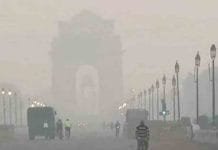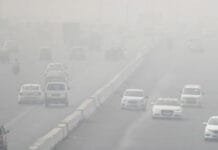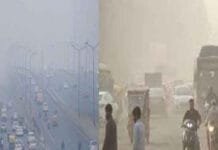Heavy rains in Delhi NCR and Noida led to severe waterlogging and traffic jams, causing major disruptions. The India Meteorological Department (IMD) had predicted heavy rainfall. Here’s a detailed report on the flood-like conditions and their impact.
Introduction
INVC NEWS
New Delhi : The skies opened up over Delhi and the National Capital Region (NCR) yesterday, drenching the city with two hours of relentless rain. The heavy downpour caused severe waterlogging in many parts of Delhi and Noida, turning roads into rivers and creating a traffic nightmare for commuters. Despite the India Meteorological Department (IMD) predicting heavy rains, the scale of the waterlogging left residents grappling with unexpected challenges.
Torrential Rains and Immediate Impact
A Sudden Deluge
In just two hours, heavy rains transformed the bustling streets of Delhi and Noida into waterlogged zones. The rain began in the early hours of the morning, catching many off guard as they prepared for their daily commutes. The rapid accumulation of water overwhelmed the city’s drainage systems, leading to extensive waterlogging.
Areas Worst Affected
- Delhi: Several posh areas, including South Delhi and Connaught Place, saw knee-deep water, disrupting daily life and business activities.
- Noida: Key sectors such as Sector 18 and Sector 62 were submerged, causing significant inconvenience to residents and office-goers.
- Gurugram: Known for its high-rise buildings and commercial hubs, Gurugram too wasn’t spared, with severe waterlogging reported in Cyber City and MG Road.
- Ghaziabad, Faridabad: These areas also faced flood-like conditions, affecting local businesses and daily commutes.
Visuals of Chaos
The aftermath of the heavy rains was captured in dramatic visuals shared widely on social media. From cars partially submerged in water to pedestrians wading through knee-high waters, the scenes were reminiscent of a flood-ravaged city. The Delhi Traffic Police had their hands full, issuing advisories and guiding stranded commuters.
Flood-Like Conditions on Roads
Major Arterial Roads Affected
The torrential rains led to flood-like conditions on many major roads:
- Mathura Road: The carriageway going from Apollo Hospital to Neela Gumbad was heavily affected, with traffic coming to a standstill.
- Ring Road: Known for its heavy traffic, Ring Road was clogged, with vehicles moving at a snail’s pace due to waterlogging.
- Ashram Chowk: The underpass at Ashram Chowk was submerged, leading to significant traffic diversions.
Metro Stations Underwater
Waterlogging outside several Delhi Metro stations added to the woes of commuters. Stations like Rajiv Chowk, Jor Bagh, and AIIMS saw water seeping into the entrances, making it difficult for passengers to enter and exit.
Posh Areas Not Spared
Even the posh areas of Delhi, which typically boast better infrastructure, were not immune to the effects of the heavy rains. Areas such as Vasant Vihar, Hauz Khas, and Greater Kailash experienced severe waterlogging, impacting residents and local businesses alike.
Traffic Turmoil
Gridlocks and Delays
With major roads submerged, traffic jams were inevitable. Commuters reported delays of over two hours in some areas. The heavy waterlogging also led to the breakdown of several vehicles, further exacerbating the traffic situation.
Police Advisories
The Delhi Traffic Police took to social media to issue advisories and keep commuters informed. In one post, they mentioned, “Due to heavy waterlogging in the Ashram Chowk underpass, traffic on Mathura Road in the carriageway going from Apollo Hospital to Neela Gumbad is affected. Avoid the area.” Such advisories were crucial in helping people navigate the chaos.
The Role of IMD and Predictive Measures
IMD’s Forecast
The India Meteorological Department had already predicted heavy rains, but the intensity and rapid accumulation of water caught many off guard. The IMD’s forecasts are crucial for preparedness, but the infrastructural challenges in Delhi NCR make it difficult to fully mitigate the effects of such heavy rainfall.
Need for Better Infrastructure
The severe waterlogging highlighted the urgent need for better drainage and water management systems in Delhi NCR. Despite repeated incidents of waterlogging, long-term solutions seem to be lacking.
Coping with the Crisis
Local Government’s Response
The local government sprang into action, deploying pumps to drain water from the worst-affected areas. However, the sheer volume of water made it a challenging task, and many areas remained submerged for hours.
Community Efforts
Residents took to social media to coordinate efforts, share updates, and offer help. From carpooling to providing temporary shelter to those stranded, the community spirit shone through during the crisis.















